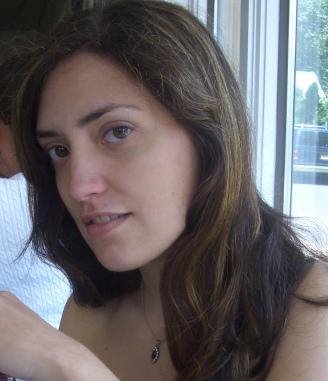Trying not to use the obvious title joke here..
I think my favorite science to read about is the type where the central idea is so elegant, you wonder why no one had thought of it already. PCR is like that, and in my mind, so is this recent JACS ASAP.
The ref: JACS 2006, DOI: 10.1021/ja0657307 (subscriber link)
The background:
I was in a bioinorganic/ biophysical chemistry lab a few years back, and the topic of FRET came up a lot. If you're unfamiliar, FRET stands for Förster resonance energy transfer (you'll also see fluorescence resonance energy transfer), and it is a convenient visual tool for measuring distances. This comes in handy when you want to learn more about protein-protein interactions, receptor-ligand interactions, and conformational changes.
You need 2 fluorescent dyes for a FRET experiment. In a simple case, you attach one dye to protein A and the other one to molecule B, and watch for changes in how they interact. If you did everything right, you'll see a different-colored glow depending on whether A is close to B.
Of course, you conscientiously selected your dyes so that their energy profiles overlapped just right. If A and B are close together, when you shine a light that would otherwise make A glow, what you see instead is mostly B glowing. That's because instead of glowing, A is able to hand off its energy to B in a way. That phenomenon is what's called FRET. Read this if you're interested in more details. Also, Lakowicz's Principles of Fluorescence Spectroscopy is an excellent book that discusses the field.
The ACTUAL PAPER:
The authors wanted an easy way to visualize a working enzyme in a living cell in real time. In other words, no additional prep time to wash out excess dyes, or having to bust the cells open to "see" the results.
Rather than bringing in two dyes on two separate molecules, the research team made a probe with two carefully chosen dyes built in.
When the target enzyme is catalytically active, it cleaves a protective group from a phenol to yield a quinone methide. There's a leaving group involved in generating the quinone methide. In this paper, the leaving group was one of the dyes. After the labeling event, the dyes aren't close together anymore, so no more FRET. (I can't remember where the liberated acceptor dye ends up, or whether that was mentioned.) The quinone methide that's left behind is a highly reactive alkylating agent that's known to latch onto any nearby nucleophile in a protein. Bingo, protein labeling and color change in one shot.

Labels: literature


0 Comments:
Post a Comment
<< Home